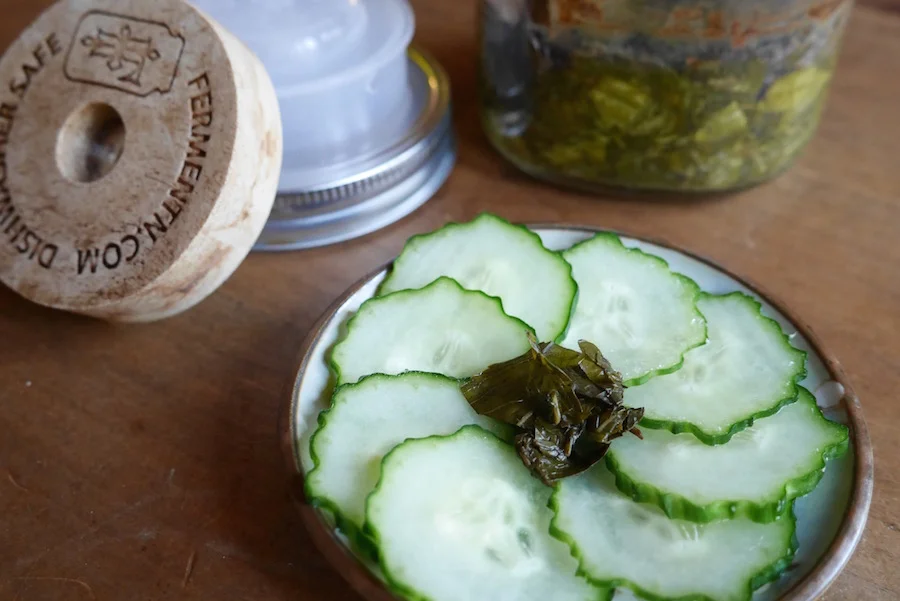The idea of foraged and found ferments has been on my mind a lot lately. I have been experimenting with more and more wild ferments in my own corner of the world while out there my global Internet buddies are doing the same. Colleen Codekas is working with cattails and Annie Levy is also experimenting with foraged ferments.
Finding small nourishment from wild plants is seasonal eating at its finest. It is interesting to watch the plants (and animals) and see how they react with the subtle changes in seasonal conditions. A good friend of mine spent a lot of time rehabilitating the creek on her property (translated this means a few years of tenacious blackberry removal.) I watched as the native plants came back to the land—trillium, California spikenard, hedge nettle, cleavers, and many others. One summer we were inundated with thick smoke from forest fires for over a month. It was then that she noticed that the coltsfoot completely disappeared. She then observed a lone squirrel inside a thicket of willow stems tearing off small strips of the coltsfoot leaves and eating one after the other. Herbal medicine recognizes coltsfoot as a lung herb.
Our days have been unseasonably hot this summer and hovering around 15° F above normal—today it will be 108° F. (We live in Oregon not the Sonoran Desert.) Luckily our mountain mornings are still cool if we get up early enough. We do our chores and any gardening before breakfast. Recently, I was back inside bracing for another scorching day when Christopher came into the house like a cool minty breeze—literally. He had been out foraging for the goats* and had tramped through a patch of wild mint. That smell reminded me of the cooling nature of mint. Mint is refreshing and finds its way into many cuisines where the climate dishes out heat.
As soon as breakfast was consumed I went out to the small spring fed riparian area below our house and picked a basket of mint. It has been fermenting for two weeks and is now finding its way into all sorts of cool no-cook meals—most recently a chilled cucumber yogurt soup. Without further ado I present you with a recipe for fermented mint leaves.
Fermented Wild Mint
Makes about a half pint
Find wild mint along water ways; if you don’t have access to that, garden mint works just as well. The most important thing is that the mint has not begun to flower. Be sure to use the larger leafed mint (link) and not the small leafed wild pennyroyal (link), which can be toxic. The other thing about the wild mint that I have been using is that it is drier and the leaves did not release enough water to even dissolve the salt properly—hence the brine.
8 ounces mint leaves, stems removed
½ teaspoon salt dissolved in 1/8 cup of unchlorinated water
Roughly chop the mint leaves and add salt-water solution. Massage this brine into the leaves (your hands will smell great) and allow to sit in a bowl, covered for about a half hour to work out more brine.
Press into a jar. Top with a ziplock bag, or pack tightly into a small jar for the burp method, or use your favorite fermenting system.
This will need to ferment about 2 weeks. You will know it is ready when the mint has turned color from the bright dark green freshness to a dull dark green, as in the photo above. It will taste lightly acidic. Refrigerate when ready to store. It will keep for at least one year.
The ferment kit pictured here fermenting the mints appears to no longer be available.
*I know that sounds a little crazy but when we are on top of things we stack functions, in other words we feed our goats the blackberry canes that are always threatening to hide our fences and choke our waterways. It is better food for the goats than baled hay and helps us keep up with the blackberries an armload at a time. It’s also important to note we are not homestead overachievers we are generally not that organized.





